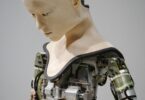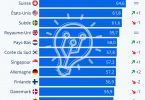À travers les divers textes que je consulte sur les jeunes générations d’étudiants, des références à l’article “The Information Age Mindset – Changes in Students and Implications for Higher Education” de Jason L. Frand reviennent souvent. Et pour cause: ce texte a beau dater de 2000, il n’a pratiquement pas pris une ride!
Formé en mathématiques, Jason Frand était professeur d’informatique à la Anderson School of Management de UCLA jusqu’à sa retraite en août 2006. Ses intérêts de recherche touchaient les conséquences de l’intégration des technologies de l’information sur la façon dont les gens apprennent et travaillent, de même que les impacts de ces changements au niveau managérial.
Dans un domaine où la technologie évolue à une vitesse folle, il fallait tout un visionnaire pour anticiper l’importance qu’allaient prendre des phénomènes comme l’apprentissage expérientiel, l’obsolescence de l’information, la difficulté à distinguer le vrai du faux, le multitâche, le peu de préoccupation pour la propriété intellectuelle, la formation hybride, la formation en réseaux, la formation tout au long de la vie, etc.
Il décrit cet “état d’esprit” de l’âge informationnel par dix caractéristiques.
Les premières quatre caractéristiques proviennent d’observations larges des changements qui nous entourent:
1.“Computers Aren’t Technology,”
2.“Internet Better Than TV,”
3.“Reality No Longer Real,”
4.“Doing Rather Than Knowing”,
Les trois suivantes décrivent comment les gens fonctionnent dans cet environnement:
5. “Nintendo over Logic,”
6. “Multitasking Way of Life,”
7. “Typing Rather Than Handwriting”
Les trois derniers seraient des besoins “subliminaux” conditionnés par l’âge numérique:
8.“Staying Connected,”
9.“Zero Tolerance for Delays,”
10. “Consumer/Creator Blurring”.
L’article pourtant très concis (5 pages de trois colonnes!) explique chacune de ces caractéristiques et se penche sur ce qu’elles signifient pour l’éducation supérieure. Quelques citations…
À propos du besoin de jugement critique pour trier l’information:
« …We cannot leap from “interacting on the Net” to “critical thinking,” but at least the opportunity is presented to engage ideas in a more compelling format than passively watching television. Unfortunately, many of our students do believe that everything they need to know is on the Web and that it’s all free. […] Although it is true that there is a significant amount of high-quality information available via the Web, it is also true that there is even more unvalidated and unsubstantiated data passed off as “fact.” […] Thus the Web is a vast (and largely uncharted) sea of data. On the one hand, students have access to all its riches. On the other hand, they must learn to search it to find the specific information desired and to draw their own conclusions. » (Frand, 2000)
À propos de l’obsolescence de l’information et de l’importance des savoir-faire:
« … In many disciplines, the half-life of information is measured in months and years. From this perspective, what a person can do is more important than what degree they obtained. (Bill Gates, a college dropout, is an icon for many in the information age.) As our students enter the workforce, the ability to deal with complex and often ambiguous information will be more important than simply knowing a lot of facts or having an accumulation of knowledge. » (Frand, 2000)
À propos de la puissance et des limites de l’apprentissage expérientiel:
« …The key to winning in Nintendo is constant, persistent trial-and-error to discover the hidden doors. The fastest way to winning is through losing, since each loss is a learning experience. If it (the game environment) breaks, simply reboot! It’s no wonder manuals or instruction sets aren’t used by today’s students—they aren’t needed. […] Trial-and-error learning may provide a more thorough understanding of a number of concepts and their implications. However, it should not be the only approach used. A balance is needed between didactic and discovery approaches. » (Frand, 2000)
À propos de l’apprentissage en réseaux:
« This conceptual change must embrace a substantial modification in the nature of the relationship between the student and education and, therefore, between the student and the institution. Let me give an analogy. University computer networks today consist of nodes at every office, classroom, and library seat. But this network concept can be expanded. We need to build an extended educational infrastructure that parallels our physical network infrastructure. When viewed from the perspective of a human network—a community of lifelong learners—the educational infrastructure becomes a means for broadening and deepening the educational experience of students and for enhancing and extending the educational experience of alumni. Each of our current and past (and future?) students is a “node.” » (Frand, 2000)
Et la conclusion:
« The outlook of those we teach has changed, and thus the way in which we teach must change. The world in which we all live has changed, and thus the content we teach must change. The industrial age has become the information age, and thus the way we organize our institutions must change, as must the meaning we attach to the terms “student,” “teacher,” and “alumni.” The challenge will be for educators and higher education institutions to incorporate the information-age mindset of today’s learners into our programs so as to create communities of lifelong learners. » (Frand, 2000)
Source: Frand, Jason L., “The Information Age Mindset – Changes in Students and Implications for Higher Education” , EDUCAUSE Review, septembre-octobre 2000, pp.15-24.






